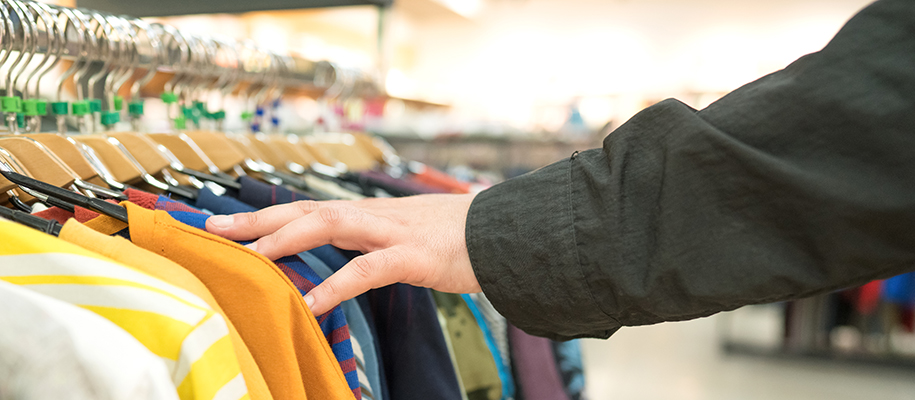Back-to-school season is upon us, and amid gathering essential supplies and planning for the academic year ahead, you have a prime opportunity to make eco-friendly choices that not only showcase your style and individuality but also contribute to sustainability. Embracing eco-friendly fashion choices can transform your experience from a simple shopping spree to a meaningful statement about valuing both fashion and the future of the planet. When shopping for new ensembles, consider these insightful tips that blend fashion with environmental responsibility.
1. Do your research
Before you embark on your shopping journey, take time to do research into what it means to purchase environmentally sustainable clothing. This can serve as the foundation for a conscious and responsible approach to your wardrobe choices. For example, did you know the fashion industry is responsible for approximately 10% of global greenhouse gas emissions? When considering where to shop, prioritize companies that value sustainability in production. Look for brands that are accredited by reputable sustainability agencies to ensure they promote ethical practices.
Another thing to take note of is choosing fabrics that are designed to last, such as durable and natural materials like bamboo, cotton, and sustainable leather. This can help increase the longevity of your wardrobe too. So even if you choose not to wear an outfit the following year, you can pass it down to a younger sibling or even sell it.
Related: 6 Amazing Scholarships for Students Who Love Sustainability
2. Only buy what you need
Before you start back-to-school shopping, decide what you need and what you don’t. Start by checking your current wardrobe. Take out all the clothes and sort them into two piles: what you can still wear and what no longer works for you. Be sure to consider which pieces could be repurposed and reused. If an item is still in good condition, consider keeping it. Talk to your family as well and decide if there’s anything you can borrow from them for the school year. Siblings who are close in age can share wardrobes and mix and match outfits, while older siblings with a bigger age difference likely have clothes they can pass down to you.
Once you’re at a store, ask yourself if an item is essential and if you’ll realistically wear it in the coming months. Impulses can make you purchase items that might seem like a good idea at first but will just sit in your closet, untouched until you decide to get rid of it. Consider how many outfits you really need and try to take a minimalistic approach by limiting yourself to things that could make a lot of different combinations with other pieces.
3. Check thrift stores
Opting for secondhand clothing is a great way to align your back-to-school shopping with eco-friendly values. Buying secondhand not only reduces waste and pollution but also extends the lifecycle of old clothes. Consider tapping into your friend groups or connecting with family members to offer trades. Local parenting groups can also be a great way to connect with other families about secondhand clothes that they need to get rid of. So consider asking your parents to help you!
Shopping secondhand isn’t just good for the environment―it’s good for your wallet too. With the secondhand market expected to double in the coming years, now’s as great a time as any to channel your inner thrifty self. Physical thrift stores have been a common way to shop secondhand for decades, but now there are even more choices with online thrift stores, resale companies, “Buy Nothing” groups, and Facebook Marketplace all offering unique secondhand finds.
Related: 8 Fashion Basics Students Need to Bring to College
4. Treat your clothes with care
Properly caring for your clothes is a vital step in creating an eco-friendly closet. The more care you give them, the longer they’ll survive, which promotes reuse and donation. Have a shirt or pants that have a tear in them? Break out the sewing kit and repair those minor damages. Practicing mindfulness can help your clothes remain usable for months and even years to come.
Also be careful that the clothes you wear meet your daily activities. For example, if you’re going on a hike, choose durable and moisture-wicking materials as well as shoes that can withstand changing landscapes. And when washing your clothes, try to do so only when necessary, and opt for the cold cycle whenever possible. This not only helps preserve quality and ensures that your fabrics don’t shrink or fade but helps conserve energy as well. Choosing environmentally friendly cleaning products can also minimize your footprint even further.
5. Recycle responsibly
Did you know that only 15% of textiles are recycled? That’s a lot of waste, and the unrecycled materials either end up in landfills or incinerated. Please recycle your clothes responsibly! If you don’t have younger siblings to pass your clothes down to, consider donating, swapping, or selling them in online groups or marketplaces. You can also consider upcycling to give your clothes new life through creative transformations. Have clothes that are beyond repair? You can still repurpose them as cleaning rags or other useful materials.
Related: 5 Easy Ways Anyone Can Fight for the Environment
As you gear up for back-to-school season, remember that your clothing choices have a lasting impact on both your style and the environment. But by reducing waste, reusing what you have, and recycling what you choose to remove from your closet, you can help build a more sustainable future.
Looking for more great advice for the start of the school year? Download our Back-to-School Guides for High School and College Students on our Resources page!






